Clancy Tucker's Blog, page 171
October 28, 2017
29 October 2017 - AUTOMATED TELLER MACHINES

AUTOMATED TELLER MACHINES
G'day folks,
Welcome to some background on the ATM.
The automated teller machine, or ATM, is such a complicated piece of technology that it does not have a single inventor. Instead, the ATMs we use today are an amalgam of several different inventions. Some of these proto-ATMs dispensed cash but did not accept deposits, for example, while others accepted deposits but did not dispense cash. Today’s ATMs are sophisticated computers that can do almost anything a human bank teller can, and have ushered in a new era of self-service in banking.
The Early Days of Automated Banking
Many experts believe that the first automated banking machine was the creation of an American inventor and businessman named Luther Simjian. Simjian held patents on all kinds of things–including an army flight simulator, a color x-ray machine, a self-focusing camera, an exercise bicycle and a teleprompter–but he was best known for his work on the Bankograph, a machine that could accept cash or check deposits at any hour of the day or night.

In 1960, Simjian managed to persuade a New York City bank to take a few of his automatic-deposit machines. So that customers could trust that they would see their money again, there was a microfilm camera inside the Bankograph that took a snapshot of every deposit. Customers received a copy of the photo as their receipt. Still, the Bankograph did not catch on. “The only people using the machines were prostitutes and gamblers who didn’t want to deal with tellers face to face,” Simjian explained, and there were not enough of them to make the machines a worthwhile investment.
The Advent of the ATM
By the end of the 1960s, however, times were changing, and a broader segment of the population–more comfortable with the idea of self-service and more willing to trust unfamiliar technologies–was willing to give automated banking a try.
In 1967, a Scottish inventor named John Shepherd-Barron was sitting in the bathtub when he had a flash of genius: If vending machines could dispense chocolate bars, why couldn’t they dispense cash? Barclays, a London bank, loved the idea, and Shepherd-Barron’s first ATM was installed in a branch on Enfield High Street not long afterward. Unlike modern ATMs, Shepherd-Barron’s did not use plastic cards. Instead, it used paper vouchers printed with radioactive ink so that the machine could read them. The customer entered an identification code and took her cash–a maximum of £10 at a time.

The first automated banking machine in the U.S. was devised by a Dallas engineer and former professional baseball player named Donald Wetzel. Wetzel’s machine used plastic cards like the ones we use today. (Instead of radioactive ink, the cards stored account information in magnetic strips.) In September 1969, a Chemical Bank branch on Long Island installed the first of Wetzel’s machines.
The Spread of ATMs
By 1970, dozens of U.S. banks had jumped on the ATM bandwagon. To introduce this new machine to consumers, banks used all kinds of advertising tricks. For example, to get the attention of female customers, a bank in Columbus, Ohio, sponsored a six-hour Paul Newman movie marathon on a local television channel. Every 25 minutes during the movies, commercials for the bank touted the advantages of its new cash-dispensing machine.
However, it took a corporate gamble and a blizzard for the ATM to win the confidence of American consumers. In 1977, the chairman of Citibank took a huge risk, spending more than $100 million to install ATMs all over New York City. That investment paid off the following January when a huge blizzard hit New York, dumping 17 inches of snow on the city. Banks were closed for days; meanwhile, ATM use increased by 20 percent. Within days, Citibank had launched its by-now-familiar “The Citi Never Sleeps” ad campaign. Posters and billboards showed customers trudging through snow to get to Citibank ATMs.
After that, almost every one of the country’s banks followed Citi’s lead. The era of the ATM was underway.
 ATMs Today
ATMs Today Today, there are almost 2 million ATMs around the globe. Although use of the machines has declined in recent years, likely because more people make purchases using credit and debit cards instead of cash, the ATM continues to have a place in modern culture. Today’s machines sell everything from airline tickets to movie tickets to medicine.

Clancy's comment: Another item that has overtaken the world - and people. These things are fine, but they did replace people who had jobs. You know, you walk into a bank, chat, get your money and leave. However, like laptops and telephones, they are fine until the power goes off ... Or, the machine runs out of money - put there by humans.
I'm ...


Published on October 28, 2017 15:10
October 27, 2017
28 October 2017 - THE LIFE OF ANTS
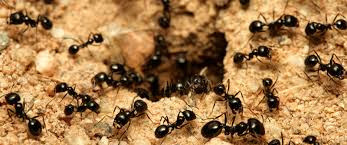
THE LIFE OF ANTS
G'day folks,
Welcome to some facts about a very industrious creature.
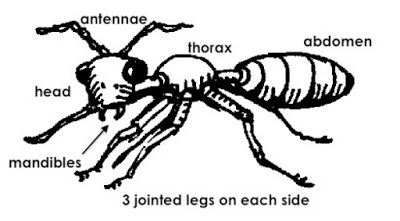
The ant is a small sized invertebratethat is found all around the world, with the exception of the polar regionsincluding the Arctic Circle and Antarctica. As with many other speciesof insect, there are numerous ant speciesinhabiting many different environmentsall around the world.
There are more than 12,000 recognised speciesof ant worldwide, but there are estimated to be nearly 14,000 in total. Ants are thought to have developed from wasp like creatures 100 million years ago after blooming flowers appeared on Earth.

Ants are found in many different sizes and vary in colourdepending on the speciesof ant. Some speciesof ant even have wings so are able to fly which only extends the range of their territory. In the more humid environmentof the tropical jungles of the Southern Hemisphere, the ants are generally of the bigger species, often reaching more than a few centimetres long.
Ants are extremely sociable insects and have a complex social structure where every ant individual has a purpose (effectively a job). Ants live in colonies and have a social structure from the worker ants that gather the materials and food, as well as nursing and caring for the ant larvae (the babies), to the queen ant that runs the nest and is the only female that reproduces in her colony.

The queen ant often can live for over a year which is considerably longer than the lives of the worker ants which only really last for a couple of months. The queen ant produces between 800 and 1,500 eggs per day which are fertilised by the sperm of the male ants which is present in the nest. Remarkably, ant eggs that have not been fertilised will still hatch but produce sterile female ants that become worker ants as they cannot reproduce.
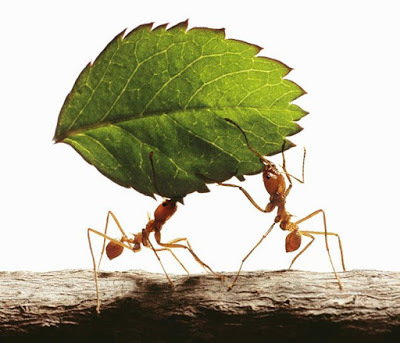
Ants are omnivorous animalsand therefore eat a mixture of both plant and animalmatter. The diet of the ant primarily consists of leaves, fungi, honey, nectar, small insects and dead animals, although the exact diet of the ant depends on the species. Some ants specieshave a more herbivorous diet, where other speciesof ant mainly eat meat.
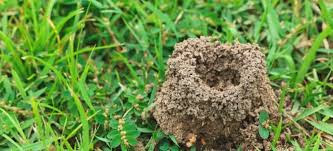
Due to their abundance and small size, ants have numerous animalsthat prey on them from tiny insectsto reptiles, mammalsand fish, and even certain speciesof plant have also developed ways in which they can digest them.
An ant is said to be able lift up to 50 times its own body weight, and be able to be pull more than 30 times its own body weight. This is the equivalent of an average human adult lifting a fully grown African elephant!

Clancy's comment: That last fact is staggering! Amazing creatures, eh?I'm ...


Published on October 27, 2017 14:15
October 26, 2017
27 October 2017 - MOBILE LIBRARIES AROUND THE WORLD
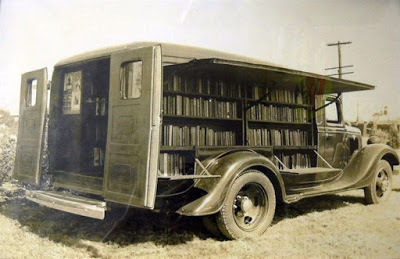 MOBILE LIBRARIES AROUND THE WORLD
MOBILE LIBRARIES AROUND THE WORLDG'day folks,
Here is a walk back in time when many places had mobile libraries.
L ong before Amazon was bringing books to your doorstep, there was the Bookmobile! A travelling library often used to provide books to villages and city suburbs that had no library buildings, the bookmobile went from a simple horse-drawn cart in the 19th century to large customised vehicles that became part of American culture and reached their height of popularity in the mid-twentieth century. Let’s take a little trip down memory lane with this forgotten four-wheeler.

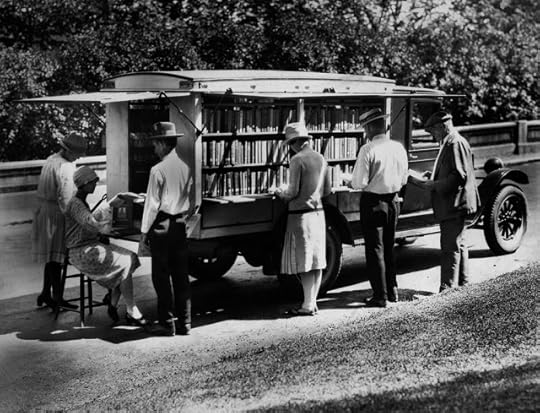


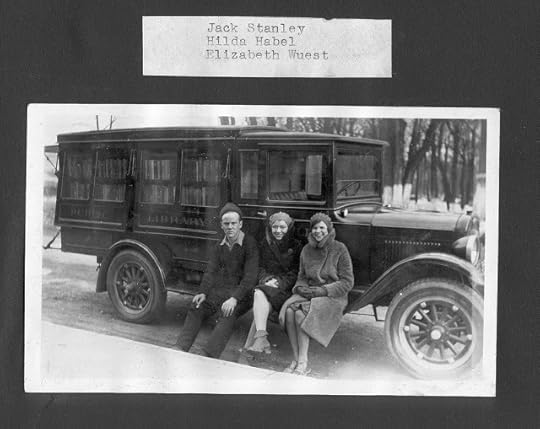



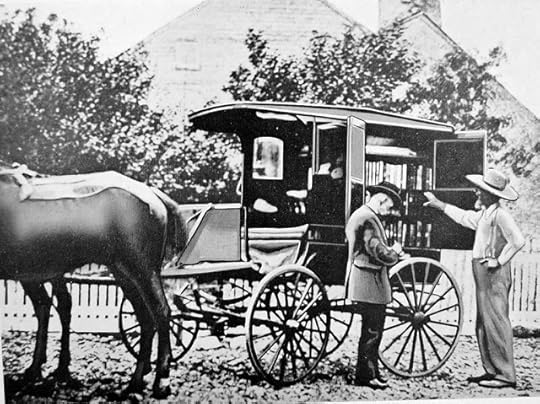
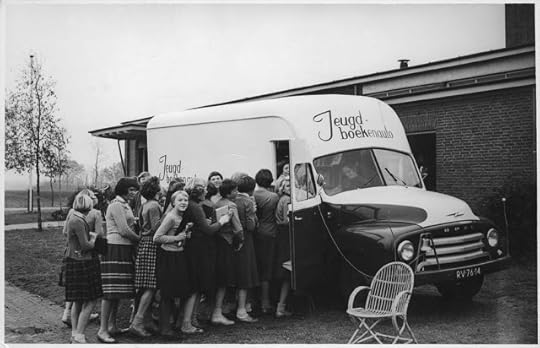
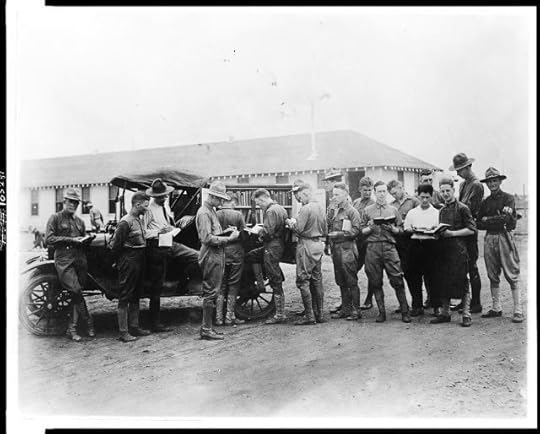
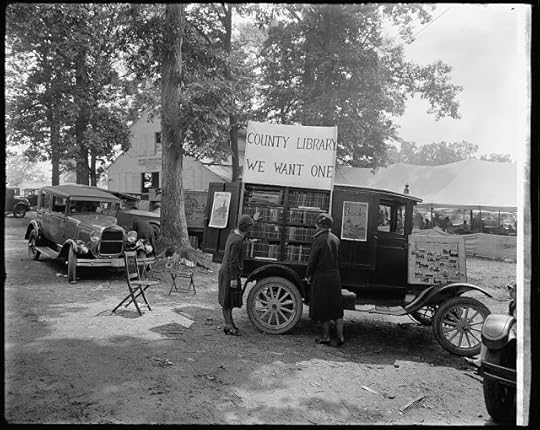


Clancy's comment: Top photographs of another era. No doubt, you noticed the hairstyles and clothing, and great to see kids reading books; not playing on their mobile phones.
I'm ...
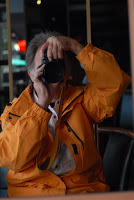

Published on October 26, 2017 13:38
October 25, 2017
26 October 2017 - THE FAMOUS CLOWNFISH
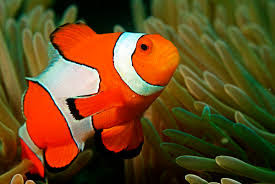
THE FAMOUS CLOWNFISH
G'day folks,
Clownfish are also known as anemone fish and have many interesting features other than starring in the film “Finding Nemo”!

Clown fish are a sub family made up of 28 different species. Nemo is a false clownfish or a clown anemonefish. True anemonefish/orange clownfish look very similar but live in different habitats.Their most distinctive traits are their orange bodies, three white bands with a black outline and black tips around the fins.They are small animals. Their bodies reach up to 11cm long on average.Clown fish are hermaphrodites. This means that they can be male and female.A clownfish is born male and has the ability to change into a female. This can happen when the dominant female dies, the dominant male will turn into a female and then choose to mate with another male in the group. However, once they change they cannot turn back.They are omnivores, meaning they eat both plants and animals. Their diet consists mainly of algae, zooplankton (tiny animals that live in water) and small crustaceans.Clownfish are found in coral reefs off the coast of Australia and South Asia.Clownfish have a symbiotic relationship (a relationship that benefits both species) with sea anemones (a sessile predator animal). Clownfish bodies have a mucus layer which is immune to the toxins the anemone produces to capture prey. The anemone provides shelter from predators and the clownfish returns the favour by removing parasites and driving away intruders.Unfortunately, due to the increased popularity of “Finding Nemo”, the number of captive clownfish kept in tanks has increased despite the film’s message about the damage caused by capturing clownfish.
Quick FactsType: FishDiet: OmnivoreLife span: 3-6 yearsSize: average 11cm longWeight: 250gHabitat: Coral reefsRange: Coastal Australia and South AsiaScientific name: Amphiprion percula
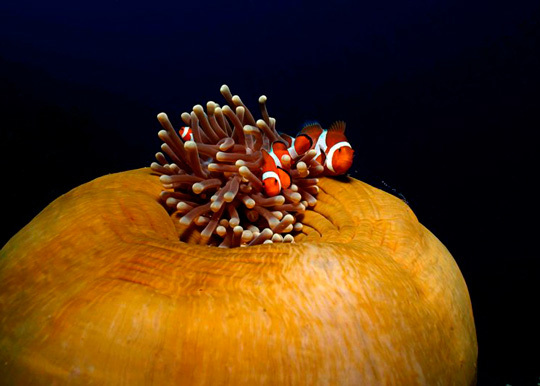
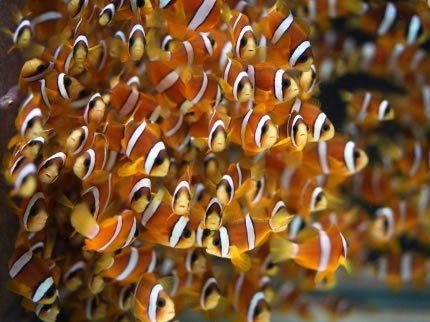
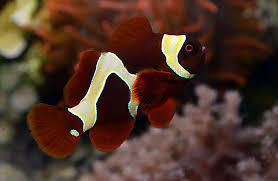

Clancy's comment: Extraordinary facts, but a fairly poor name for these cute fish. After all, they have become famous in Hollywood. That's more than I can say.
I'm ...
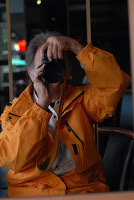

Published on October 25, 2017 13:48
October 24, 2017
25 October 2017 - A WONDERFUL TOY COLLECTION
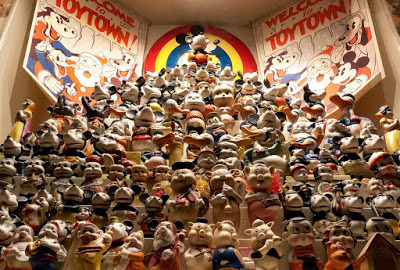
A WONDERFUL TOY COLLECTION
G'day folks,
Welcome to a collection to beat all collections.
W hat is it that makes someone start a collection which alters the course of their entire life? For Mel Birnkrant, it was an iron Mickey bank he saw at the Paris flea market in 1958. His hotel room rent was $30 a month and the toy was $10. It was in that moment, at the one and only Marché aux Puces, Mel was first bitten by the collecting bug. It would take him many more years to understand how that toy had such power over him.
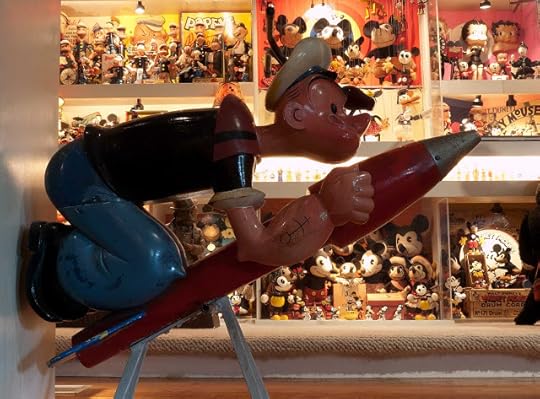
The purchase spurred a lifetime of toy collecting, turning objects not intended to be “art” and elevating them to that very level. “This simple act of recognizing that this object I had found was art, in 1958, when to all the rest of the world, it was not, and standing behind my conviction by paying what was, then, a painful price, I experienced all the emotional satisfaction that I would have if I had actually created this powerful object myself,” writes Mel. “Recognizing the visual merits of humble works, intended merely to amuse children and later be discarded, became, for me, an act of creativity. I could sense my entire body tingling, and, ever so slightly, levitating.”

Mel’s private collection in his home in upstate New York doesn’t seem of this earth. It’s impossible to wrap your brain around the idea that this “Mouse Heaven”, as he calls it, a mind-boggling museum of Mickey Mouse and other toys of pre-World War II comic characters, was created by just one man. It is a genius work of lost art, a museum of dreams.

There is no doubt Mel Birnkrant is an artist in the same way that Andy Warhol or Roy Lichtenstein are artists– Andy with his supermarket products and Roy with his old comic books. Mel also made toys himself over the years and invented the iconic Baby Face doll as well as The Outer Space Men action figures. From 1964 to 1986, Birnkrant designed toys for the Colorforms Company.
Here are some more pictures of this grand collection.


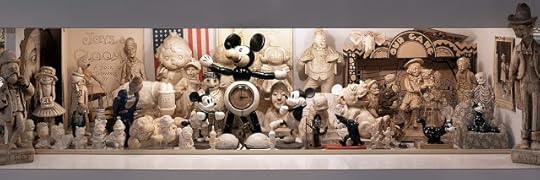
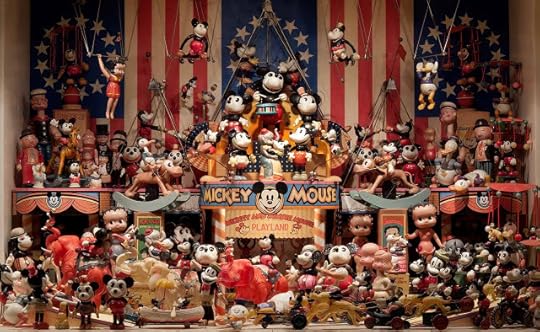
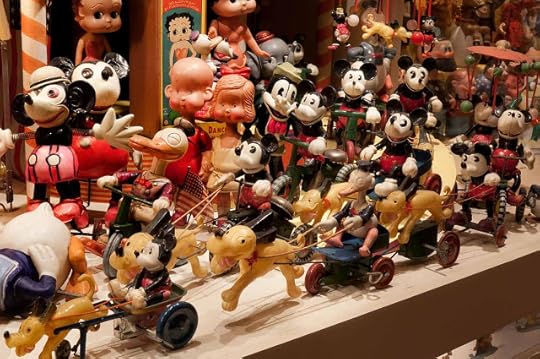
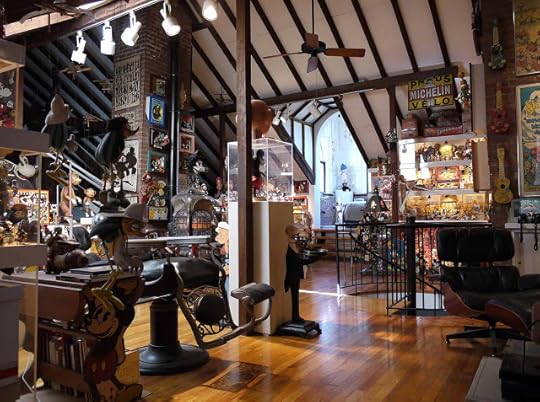

Clancy's comment: Mel is obviously a big kid at heart, but there's nothing wrong with that.
I'm ...


Published on October 24, 2017 14:07
October 23, 2017
24 October 2017 - AMAZING FACTS ABOUT KILLER WHALES

AMAZING FACTS ABOUT KILLER WHALES
G'day folks,
The killer whale or orca is a toothed whale belonging to the oceanic dolphin family, of which it is the largest member. Killer whales have a diverse diet, although individual populations often specialize in particular types of prey.

Killer whales are considered to be highly intelligent and curious marine mammals. Despite their name, there have been no recorded human fatalities caused by killer whales in the wild.
Killer whales can reach up to 10 metres long and have a distinctive black body with a white underside and patches of white behind and above the eye and a grey patch behind the dorsal fin.They are toothed whales and belong to the dolphin family.Their tall dorsal fin can reach up to 2 metres (a little bit taller than the average human) in height.Killer whales can travel up to 160km in one day!They live in waters ranging all over the world, from the Arctic Circle all the way to Southern Australia and Antarctica!Orcas are apex predators which means they have no natural predators that prey on them. They hunt in packs and like to take down whales bigger than themselves! They also eat fish, seals, cephalopods (squid, octopus and cuttlefish), sea birds and turtles. Killer whales are very playful, sociable and live in matriarchal pods (groups led by females).Killer whales communicate with each other via echolocation. Echolocation is the process of sending out a call through sound waves and listening to the echo of the call. Each echo carries information which is understood by the whale.It is known that groups of killer whales have their own echolocation dialect (a language that is specific to a certain social group), which is different to another killer whale population. This behaviour is a display of animal culture, a trait that was only thought to be human specific.In the wild, killer whales pose no threat to humans whatsoever. Unfortunately, killer whales that have been kept in captivity have harmed and sometimes even killed their trainers. Killer whales are usually distressed and can turn aggressive when kept in captivity. This is because they are too large and intelligent to be kept in a small and unstimulating environment without them suffering.Killer whales in the wild can live for up to 90 years! The oldest known orca lived to the age of 103! A captive orca’s lifespan is approximately only 20 years.The orca’s conservation status is not clear due to insufficient data, but some local orca groups are thought to be at risk due to pollution, habitat loss, capturing for captivity and other conflict with humans.
 Quick FactsType: MammalDiet: CarnivoreLife span: Approx. 50 years in the wildSize: 10 metresWeight: Up to 10,000kgHabitat: Marine watersRange: Across the worldScientific name: Orcinus orca
Quick FactsType: MammalDiet: CarnivoreLife span: Approx. 50 years in the wildSize: 10 metresWeight: Up to 10,000kgHabitat: Marine watersRange: Across the worldScientific name: Orcinus orca


Clancy's comment: I love these creatures. So much so, they are featured on my bucket list.
I'm ...
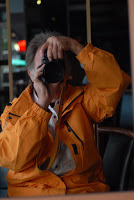
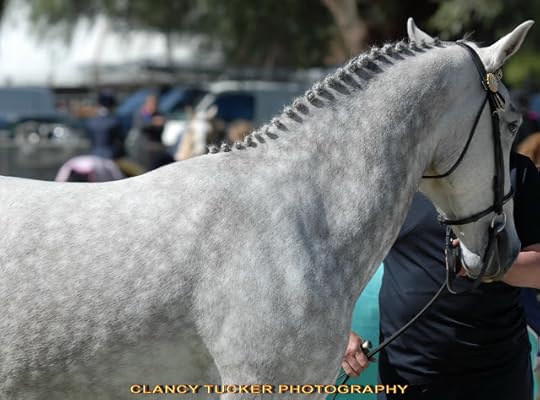
Published on October 23, 2017 14:39
October 22, 2017
23 October 2017 - BUILDING THE PARIS UNDERGROUND

BUILDING THE PARIS UNDERGROUND
G'day folks,
Ever been to Paris? Used the underground? Well, check out how it was built.
P aris in the Belle Epoque, what a fabulous time and place to have lived, right? Well, not so much. If you were living in Paris at the dawn of the 20th century, it probably would have felt more like a giant nightmarish construction site.

Because the year before the city’s first underground railway line opened on 19 July 1900, was the year they turned Paris inside out.

I’d always imagined metro tubes were constructed underground in the tunnels, out of sight, but the tube at Saint-Michel was built above ground first and then literally sunk below street level after the tunnels were dug out.

Now, check out some great photographs of this engineering feat.



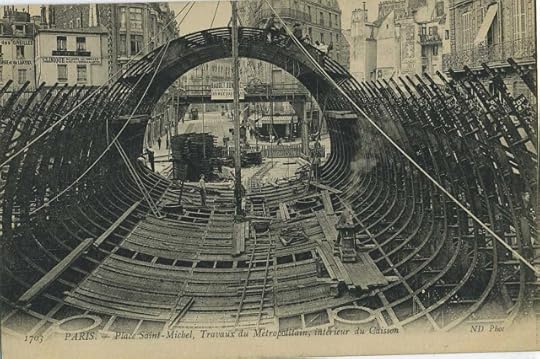



Clancy's comment: I love looking at old photographs like these. They show you how clever people made long-lasting infrastructures.I'm ...


Published on October 22, 2017 13:49
October 21, 2017
22 October 2017 - MOVING PICTURES
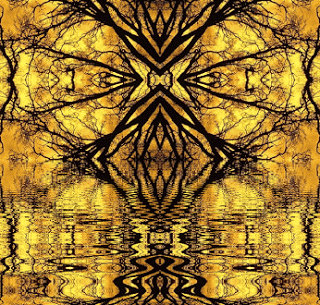
MOVING PICTURES
G'day folks,
Check out these fine examples of moving pictures.















Clancy's comment: So clever. Love the ship on the high seas.
I'm ...


Published on October 21, 2017 14:23
October 20, 2017
21 October 2017 - Amazing Facts About the Tarantula
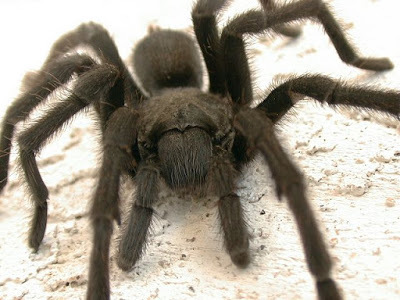
Amazing Facts About the Tarantula G'day folks,Most people dislike spiders. Do you? Well, here is a hairy one.
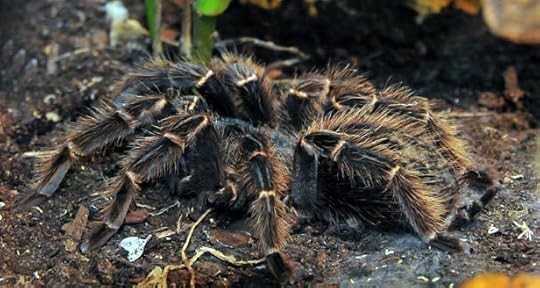 Tarantulas comprise a group of large and often hairy arachnids belonging to the Theraphosidae family of spiders, of which approximately 900 species have been identified.
Tarantulas comprise a group of large and often hairy arachnids belonging to the Theraphosidae family of spiders, of which approximately 900 species have been identified. There are approximately 900 species of tarantula in the family Theraphosidae. The tarantula’s reputation is based more on legend than reality as there are only a few species which have a powerful bite. The venom of most is not highly toxic to humans. Tarantulas are actually placid and harmless and will only attack if goaded and, in many cases, the bite is no more harmful to humans than a bee sting.
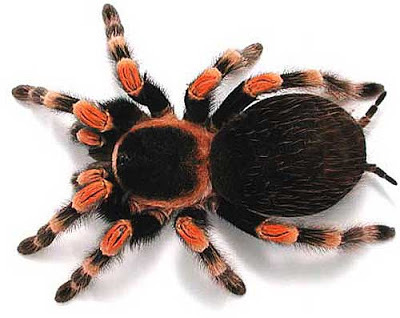
Tarantula’s jaws move up and down, instead of the more common side-to-side motion in other spiders. They also have 8 tiny eyes, which are able to distinguish the slightest movement, and hairs which cover its body and are extremely sensitive to vibrations.
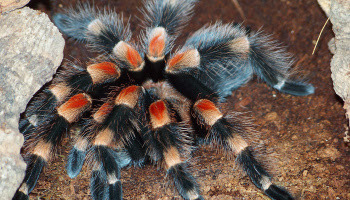
Some species have adhesive ‘hair-brushes’ on the tip of their legs which allows them to climb vertically up even the smoothest leaves. Tree-dwelling species locate a mate by their scent, and then follow the silken trail that the female leaves as she moves. While mating takes place at various times of the year, rainstorms in the desert areas of south-western Mexico causes vast number of male spiders to wander around in search of a potential mate. In some species, the male performs a jerky courtship dance to encourage the female to become receptive.
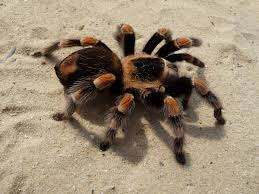
After mating, the female carries her eggs in a silken cocoon attached to her body. The growth of a newly hatched spider into a mature spider is a long process and can take up to ten years. The tarantula does not spin a web, but bites its prey with long, curved fangs, injecting it with a poison which slowly renders the victim helpless. It will then crush its food between its powerful jaws, at the same time injecting a fluid which breaks down the victim’s tissues. This turns the prey into a soft pulp, which can then be eaten. Tarantulas have a wide range of defences. Some species simply lean back on their haunches, raising their head and legs and exposing their curved fangs in an intimidating display. South American species of tarantula use their legs to scrape off the fine hairs from the top of their abdomen. Each hair is covered with tiny points which, when propelled at an enemy, are both painful and dangerous, especially if they come into contact with the eyes or skin. These tactics are used against a variety of predators, such as racoons and skunks which try to dig the tarantula out of its burrow, or birds, lizards and frogs which may attack it when it is exposed in the open. The ‘spider-hunting wasp’ is the most deadly enemy of the tarantula. Known as the ‘tarantula hawk’, it is usually much smaller than the tarantula, yet ventures into the spider’s burrow and manages to paralyze it with its sting. It then drags the spider back to its own burrow and keeps it to provide a fresh supply of food for its larvae. The purse-web spider, Atypus affinis, is a British species once thought to be a tarantula; however it has now been classified separately. Some of the more popular and colourful species are now threatened due to collecting for the exotic pet trade. The Mexican red-kneed tarantula is a protected species and international trade in this spider is restricted under law. The name tarantula was originally given to a spider living in Southern Italy from the town of Taranto where legend claims that a small species of spider living there had a fatal bite. The only cure was for the victim to dance until exhausted, by which time the poison would have been sweated from the system (the frenzied folk dance based on the Italian legend is called the tarantella).

Clancy's comment: Mm ... Interesting, but very ugly.I'm ...


Published on October 20, 2017 14:41
October 19, 2017
20 October 2017 - SWEDEN’S COLLECTION OF AMERICAN CARS
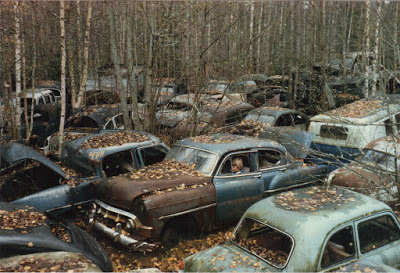
SWEDEN’S COLLECTION OF AMERICAN CARS
G'day folks,
This post relates to more cars that have been collected and deserted. The “Raggare” movement, which emerged from a post-war youth counterculture mainly in Sweden and parts of Norway, is known for its undying love of vintage American hot rod cars and 1950s pop culture.
Deep in the Swedish woods, there lies an army of more than a thousand abandoned cars, decaying since the 1950s. The land was once owned by two brothers who opened a scrapyard business for cars left behind by U.S servicemen in Sweden and around Europe after WW2. Disassembling the cars and selling them off to Norway for parts was big business in Sweden at the time. Norway had been left a poor country after the war and car parts were near impossible to get. Junkyards popped up all along the Swedish border and Norwegians were their best customers.

The brothers who owned Båstnäs lived on the land and continued selling abandoned American cars up until the 1980s. Today you can still the see the forgotten cars strewn around the land, filling the fields surrounding the brothers’ two dilapidated homes.
While many Swedes are demanding the country’s junkyards be removed and the forests cleaned up, ironically, environmentalists are pleading for them to stay, arguing that wildlife have made nests in the automobile remains. And if they get their way, the cars will remain until they’re dust.

“Ragga” roughly means “to pick up girls” in Swedish and they were known to do just that; pick up impressionable young women in one town and find new ones in the next, having their “bad boy” way with them in the back seat of the car along the way.

Today, the Raggare have quite a different reputation, met with amusement or only mild disapproval by modern mainstream society. There’s been some controversy about the raggare seen waving the Confederate flags while driving their old muscle cars, but to quote an article published last year by Jalopnik about the car culture, “like most cultural icons, the Confederate flag doesn’t translate fully when its taken overseas … and in Sweden, it’s both a symbol of America and rebellion, and not of anything with scary undertones.”
Now, check out these pearlers.




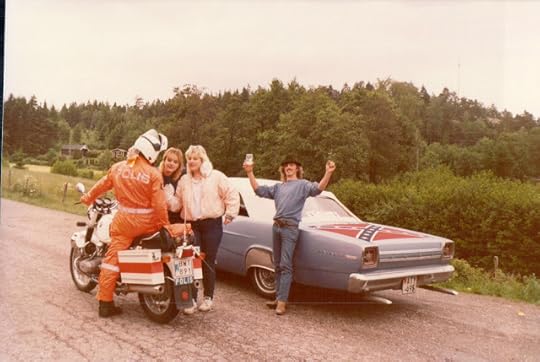

Clancy's comment: Amazing, eh? So much steel, and so many spare parts for some keen enthusiast who is restoring one of these icons.
I'm ...


Published on October 19, 2017 13:56



